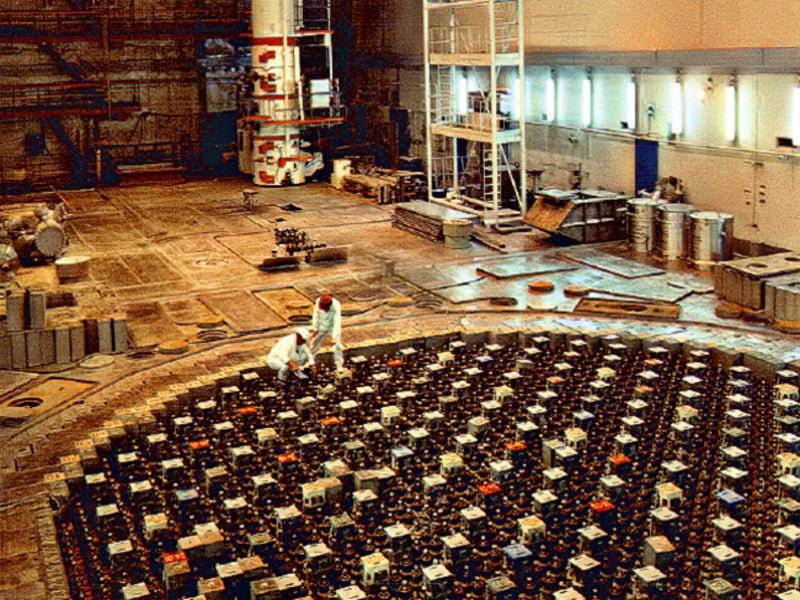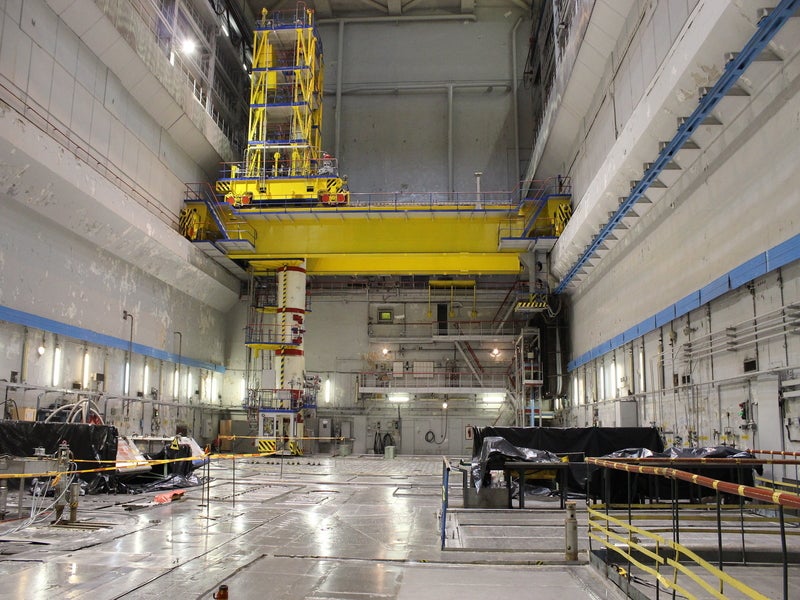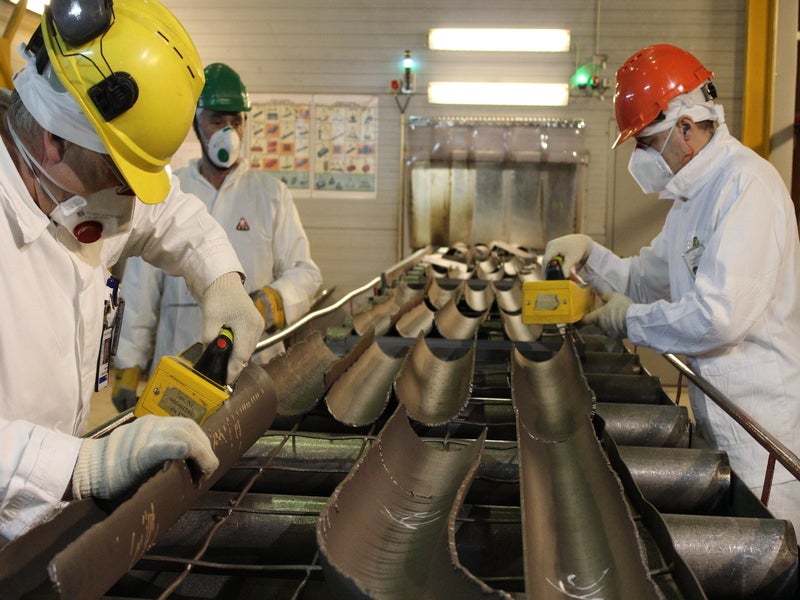Located near Ignalina, Lithuania, the Ignalina nuclear power plant originally featured two 4,800MW units. The first power plant unit was commissioned in 1983 and the second unit in 1987.
The capacity of each unit was reduced to 4,200MW after the nuclear accident at the Chernobyl nuclear power plant in Ukraine in April 1986.
The plant is currently undergoing decommissioning that is controlled by the Lithuanian Ministry of Economy.
The units were shut down in 2004 and 2009 respectively, citing the potential risk of nuclear hazard due to the similar RBMK 1500 reactors as used in the infamous Chernobyl plant. Ignalina plant was designed to remain operational until 2015, if not closed.
Due to be completed in 2038, the decommissioning project is estimated to cost €3.4bn ($3.8bn).
Construction flaws of the RBMK nuclear reactors
The Ignalina nuclear power station used two light-water, graphite-moderated, high-power channel type RBMK 1500 reactors that were designed by the Soviet Union.
An accident localisation system (ALS) was also in place to contain the radioactive materials in the plant.
Several non-upgradable faults of the reactor design were discovered during the Anticipated Transients Without Scram (ATWS) study.
The study was performed to identify the power plant reactors’ potential improvement scope and threats, as well as the requirements for the reactors’ shutdown system future modifications.
The effective shutdown system acted as a substitute for the insufficient intrinsic safety features in the RBMK reactors, while the lack of proper containment building increased the potential risks, leading to the plant’s closure.
Ignalina nuclear power plant decommissioning details
Lithuania agreed for the early closure of the nuclear reactors, as part of its accession process to the European Union in May 2004. The dismantling of the first unit began in 2010, while that of the unit’s turbine hall equipment was completed in June 2016.
The dismantled contaminated equipment was treated and transported to the new solid radioactive waste management facility that was opened in 2017, while the decontaminated equipment was released from the plant.
The dismantling of the unit’s heat plant, emergency core cooling system (ECCS) tanks, gas circuit and venting was also completed.
A total of 17,000 RBMK spent nuclear fuel rods were dismantled from the reactors in the units and safely stored in 190 specially designed CONSTOR® RBMK 1500 / M2 casks.
The casks were transported to the nearby 2,370m² interim spent-fuel storage facility that was opened in October 2016.
The complete defuelling of the units and its transportation to the new facility will be completed by 2022. The 17,100t reactor core will also be dismantled.
A landfill facility is being developed for disposing 60,000m³ of operational waste and dismantled Class A waste that will accumulate during the demolition and site remediation process.
A modular, multi-barrier near-surface repository is being constructed to dispose of 100,000m³ of low and intermediate level short-lived radioactive waste.
Financing
In 2001, Ignalina International Decommissioning Support Fund was set up by the European Commission and 14 European governments to provide funding for the Ignalina nuclear power plant decommissioning.
European Bank for Reconstruction and Development (EBRD) manages the fund. It received €750m ($827m) by 2018.
The allocated budget for the decommissioning project for the period between 2021 and 2027 is €780m ($905.2m).
The project is also supported by the Lithuanian state funds.
Contractors involved in Ignalina nuclear power plant decommissioning
NUKEM Technologies performs the development, designing, procurement, installation and pre-commissioning works of the solid waste treatment and storage facility (SWTSF) and solid waste retrieval facility at the nuclear power plant site.
NUKEM subcontracted a Lithuanian construction company Vetruna for the construction of the nuclear waste containment unit.
A consortium of NUKEM and GNS Gesellschaft für Nuklear-Service designed and built the spent nuclear fuel container for interim storage.
The near-surface repository is being constructed by Areva TA consortium and France-based radioactive waste management company Andra.
Ignalina nuclear power plant history and safety measures
The Ignalina nuclear power plant was developed under the former Soviet Union’s North-West Unified Power System.
Following the independence of Lithuania in March 1990, under the Lithuanian Republic jurisdiction, the Lithuanian Ministry of Economy became the owner of the nuclear plant.
The Lithuanian Nuclear Power Safety Inspectorate (VATESI) has subsequently regulated the plant since 1994.
In February 1994, the Lithuanian Government, the Ignalina nuclear power plant and the EBRD signed an agreement to provide a $36.9m grant for the plant safety improvement programme (SIP), in accordance with Nuclear Safety Account.
The improvements included 20 projects across operational, safety and service areas.
Another safety improvement programme SIP-2 was implemented to perform design modifications, safety analysis and plant management.






